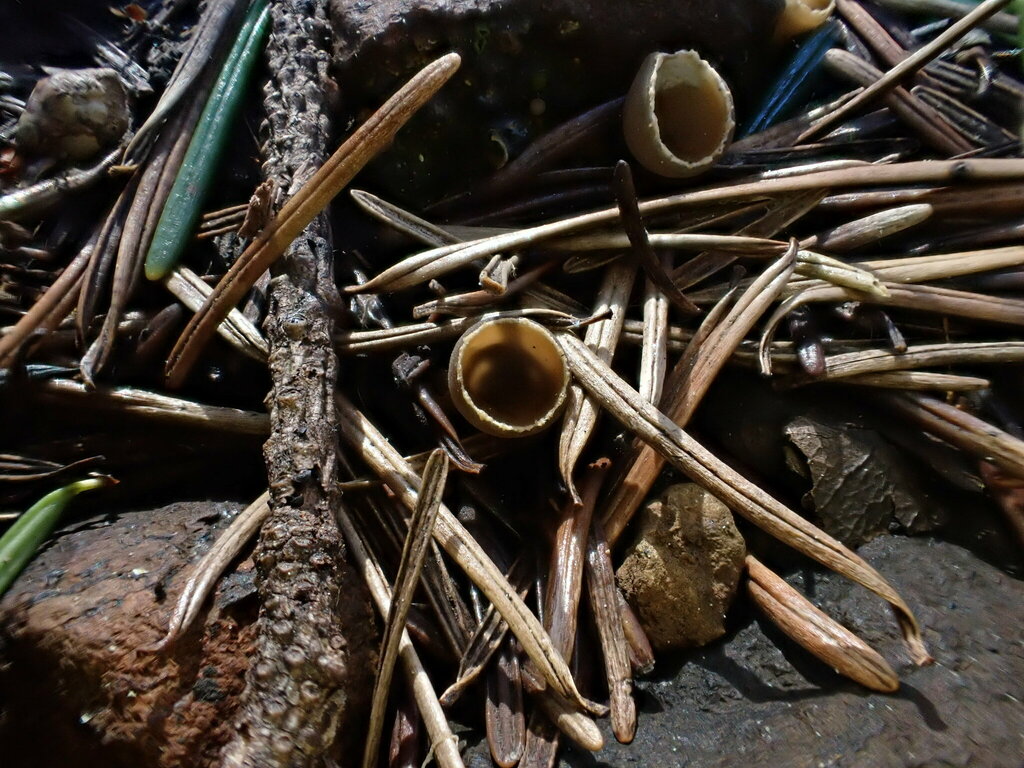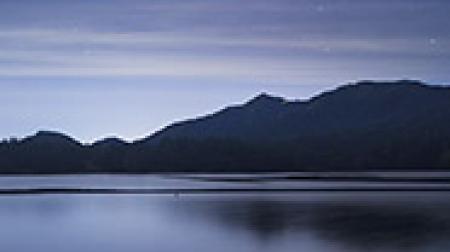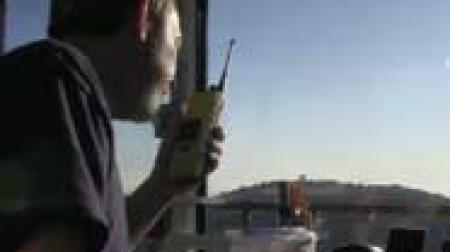FUN(GI) & FRIENDS
By Michela Gentile, Science Communication Specialist, Golden Gate National Parks Conservancy
Pictured above: Stalked bonfire cup (Geopyxis carbonaria), observed by Sadie Hickey, One Tam’s newest Conservation Management Assistant. She joined our team in February 2024 and will be supporting our landscape-scale work for a healthy Mt. Tamalpais, such as our early detection rapid response weed management program. Welcome, Sadie! Photo: Sadie Hickey/Parks Conservancy
In the in-between of early spring, we usually say goodbye to mushrooms while greeting the first wildflowers of the year. We’re still getting rain (this year, a lot of rain), and everything is green. A perfect time for a bioblitz, in other words.
A bioblitz is a quick, intensive survey of the species present in an area that contributes to our knowledge of local biodiversity. In late February, about 25 curious volunteers and staff explored an area of the Mt. Tamalpais Watershed near Rock Spring, looking for fungi and other life that might be observed. It was an interesting spot due to the area’s diversity of habitats, and also because 11 nearby acres received a health-promoting prescribed burn last October. Fire is an important part of our ecology and many species need fire to regenerate. But most of the Mt. Tamalpais area hasn’t burned in decades. Would we find any “fire-following” mushrooms?
Yes, it turned out! Pictured above is one example, the stalked bonfire cup (Geopyxis carbonaria). It can be found throughout the northern hemisphere on burned ground where conifers grow. It is one of the first species to emerge after a fire and helps decompose the charred vegetation.
The day also presented us with curled-up California slender salamanders, delicate Western fairy slipper orchids, and many more fabulous fungi. A very large San Francisco alligator lizard even made a special appearance. So far, volunteers and staff have observed 109 different species, and more may follow as we work on completing identifications. Head to the event’s page on iNaturalist to see more finds and photos of what’s appearing in this place, in this peculiar part of the year.


